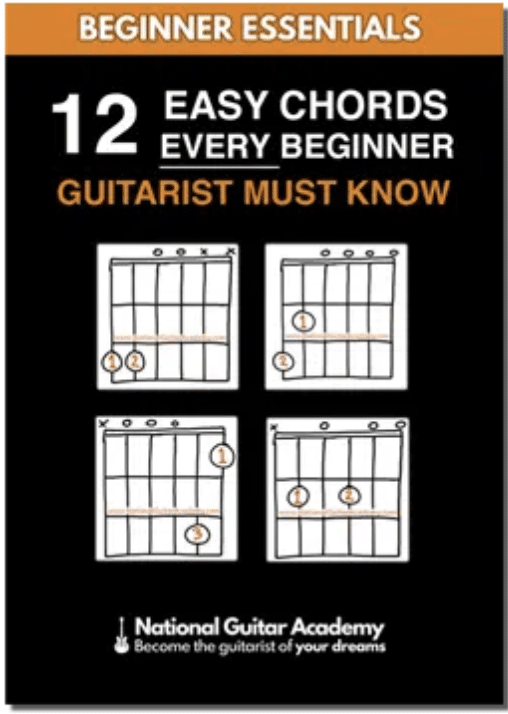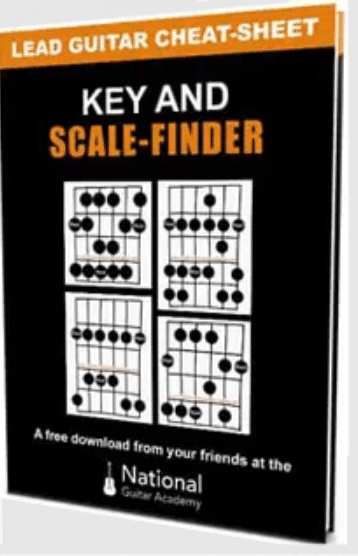It might sound simple, but learning the notes of the sixth string is crucial. You’ll be able to quickly apply common patterns that will unlock the ability to jam with friends, hit any note or chord instantly, and fly up and down the fretboard.
If you’re struggling to learn the notes on the guitar’s sixth string, I’ve got a really helpful practical tip for you which will fix that problem very, very quickly. Right, this is what you need. Some masking tape, I think painter’s tape it’s called in some parts of the world.
I’m going to get a pen and we’re going to write on here G A B. Yeah, I’m going to tear off this strip that we’ve just created and I’m going to divide each of these into squares. Okay, so my first one is G and I’m going to put this tape on the neck of my guitar on the third fret. Right, the third fret is the one with the dot, with the first dot there and I’m going to put this here.
Now, I’ve probably done that square a bit too big. Now, that’s my G. I’m going to do the same on the next dot along which is on the fifth fret. That’s my A. I’m going to do the same on the seventh fret which is my B. I’m sure you can see that there, G A B on the third, fifth and seventh fret.
Now, as long as you use masking tape, painter’s tape, that won’t damage the guitar or do any harm to your guitar at all but it gives you a visual reference so that whenever you’re playing those notes you can see them there. Yeah, you can see them over the top. This is super cool for bar chords because remember the root notes of this sixth string here, they also dictate the chord that you’re playing.
So, if you’re playing a movable E shape here, that chord is G. So, that note is G and that chord is G. For here, that note is A and that chord is A and that one is B. So, it’s brilliant for bar chords but also it’s just very cool for any type of lead guitar. You know, if you want to play something in G minor then you can just play the minor pentatonic shape beginning there. Yeah, or the same on A. Play an A minor chord, play something from the A minor pentatonic.
It’s cool to learn those box patterns of, you know, the different chords and the scale there, the different scales that we play, but you need to know where to apply them. Remember, learning the note, you don’t need to know every note on the guitar fretboard, you really don’t, but you do need to know all of the notes on the sixth string definitely and the notes of the fifth string and if you know those, if you know all the notes on those two strings, you’re in business and this tip that I’ve shared with you today will help you do that because every time you see that and before long you will know, you’ll learn very quickly third fret G, fifth fret A, seventh fret B, but having that visual reference there at the start and not overwhelming yourself with anything else. The cool thing about this is where you have the G A B, you can quickly work out what’s before and after it.
So let’s say someone says to you, where’s there a C note on the sixth string? Well, you might not know the answer to that, but if you remember your G A B, three, five, seven, you can say, well, I know C comes after B and if you know B is on the seventh fret, then very quickly you can work out C is on the eighth fret to the next one up from there, but the starting point is just getting a foothold in the neck, getting a foothold there and that’s why G A B works so well.



